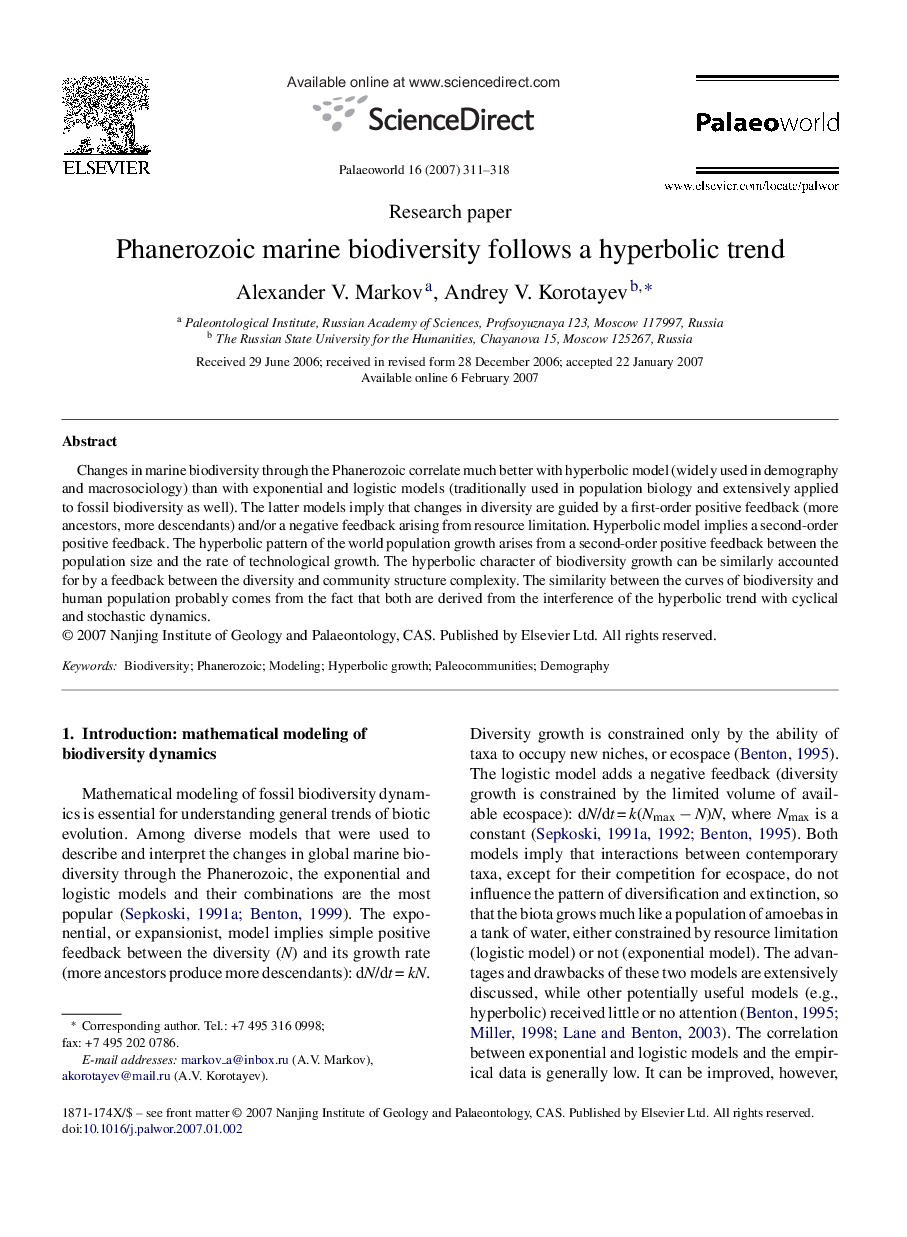| Article ID | Journal | Published Year | Pages | File Type |
|---|---|---|---|---|
| 4749722 | Palaeoworld | 2007 | 8 Pages |
Changes in marine biodiversity through the Phanerozoic correlate much better with hyperbolic model (widely used in demography and macrosociology) than with exponential and logistic models (traditionally used in population biology and extensively applied to fossil biodiversity as well). The latter models imply that changes in diversity are guided by a first-order positive feedback (more ancestors, more descendants) and/or a negative feedback arising from resource limitation. Hyperbolic model implies a second-order positive feedback. The hyperbolic pattern of the world population growth arises from a second-order positive feedback between the population size and the rate of technological growth. The hyperbolic character of biodiversity growth can be similarly accounted for by a feedback between the diversity and community structure complexity. The similarity between the curves of biodiversity and human population probably comes from the fact that both are derived from the interference of the hyperbolic trend with cyclical and stochastic dynamics.
